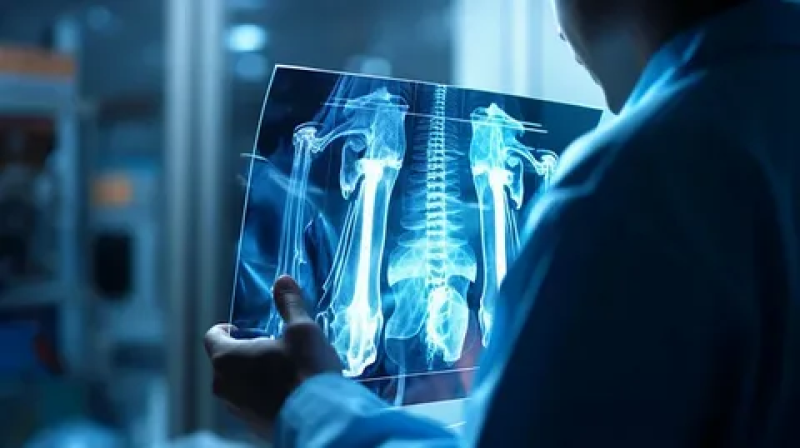Orthopedic medical imaging has become a cornerstone of modern musculoskeletal diagnostics and treatment planning, offering clinicians unparalleled insights into bone and joint health. This specialized branch of medical imaging focuses on capturing detailed images of the skeletal system, which includes bones, joints, ligaments, tendons, and surrounding soft tissues. With rapidly evolving technologies, orthopedic imaging not only enhances diagnostic accuracy but also improves surgical outcomes and patient recovery. From traditional X-rays to cutting-edge 3D imaging modalities, orthopedic medical imaging serves as an essential tool in the effective management of orthopedic conditions.
Comprehensive Overview of Orthopedic Imaging Modalities and Techniques
A wide array of imaging modalities is utilized in Orthopedic Medical Imaging diagnostics, each providing unique advantages in visualizing specific anatomical structures. Conventional radiography, or X-ray imaging, remains the primary tool for initial assessment of fractures, dislocations, and degenerative bone diseases due to its speed, affordability, and accessibility. However, for more complex evaluations, such as soft tissue injuries or subtle bone abnormalities, advanced techniques like Magnetic Resonance Imaging (MRI) and Computed Tomography (CT) scans are indispensable.
MRI excels in providing high-contrast images of soft tissues such as cartilage, ligaments, and muscles, making it invaluable for diagnosing ligament tears, meniscus injuries, and tumors. CT imaging, with its ability to produce detailed cross-sectional views, is widely used for preoperative planning and evaluating intricate fractures. Additionally, emerging technologies such as 3D ultrasound and dual-energy X-ray absorptiometry (DEXA) complement traditional imaging by assessing bone density and real-time tissue dynamics. These diverse imaging options empower clinicians to tailor diagnostic approaches based on the specific orthopedic condition and patient needs.
Navigating the Latest Orthopedic Imaging Market Research Trends and Insights
The orthopedic medical imaging sector is witnessing significant advancements fueled by technological innovation and increasing demand for minimally invasive procedures. For healthcare providers and industry stakeholders looking to comprehend the evolving landscape, detailed market research reports analyzing the latest trends, adoption rates of novel imaging equipment, and regional demand patterns provide critical intelligence. These reports offer exhaustive data on imaging system installations, revenue forecasts, and competitive landscapes, serving as invaluable tools for decision-making.
Navigational resources within these reports highlight the growing integration of artificial intelligence (AI) and machine learning algorithms, which are revolutionizing image analysis and diagnostic workflows. The adoption of portable and point-of-care imaging devices is another key highlight, reflecting a shift towards more accessible and patient-friendly diagnostic solutions. Comprehensive insights into regulatory frameworks and reimbursement policies related to orthopedic imaging are also covered, helping stakeholders navigate the intricate healthcare ecosystem effectively.
Impact of Orthopedic Medical Imaging on Surgical Planning and Postoperative Care
Orthopedic imaging significantly enhances surgical precision by enabling detailed preoperative visualization of complex musculoskeletal structures. Surgeons rely on high-resolution imaging to understand fracture patterns, identify deformities, and plan implant placements with confidence. For example, 3D reconstructed images derived from CT scans facilitate virtual surgical simulations, which contribute to better intraoperative decision-making and reduced operative times.
Postoperative imaging plays a critical role in monitoring healing processes, detecting complications such as infections or implant failures, and guiding rehabilitation protocols. Regular imaging follow-ups empower clinicians to make timely interventions, thereby improving patient outcomes. Moreover, the integration of intraoperative imaging systems allows real-time visualization during surgery, promoting minimally invasive techniques and reducing patient morbidity.
Commercial Availability and Procurement of Next-Generation Orthopedic Imaging Systems
With rising clinical demand, the commercial orthopedic imaging market is becoming increasingly dynamic, featuring a broad spectrum of equipment options ranging from basic digital radiography systems to sophisticated MRI and CT units tailored for musculoskeletal applications. Healthcare facilities and diagnostic centers seeking to upgrade or expand their imaging capabilities must navigate various procurement considerations including system capabilities, software integration, vendor support, and cost-effectiveness.
Key features driving commercial interest include enhanced image resolution, faster scanning times, reduced radiation doses, and user-friendly interfaces. Furthermore, many vendors now provide bundled service packages that cover installation, maintenance, and training, ensuring seamless deployment in clinical settings. The availability of financing models and rental options further facilitates acquisition, making advanced orthopedic imaging technologies accessible to a broader range of medical institutions.
Facilitating Better Patient Outcomes Through Orthopedic Imaging Innovations
Continued innovation in orthopedic medical imaging is instrumental in shifting the standard of care towards more personalized and efficient treatment paradigms. Advanced imaging techniques contribute directly to earlier diagnosis, accurate staging of musculoskeletal disorders, and the customization of therapeutic interventions. By enabling a clearer understanding of pathophysiology, imaging advancements assist in crafting targeted treatment plans that reduce recovery times and enhance quality of life.
Moreover, the integration of big data analytics and cloud-based imaging platforms is fostering improved collaboration among multidisciplinary teams, supporting remote consultations and second opinions. These technological enhancements not only optimize clinical workflows but also augment patient engagement by providing clearer communications about diagnoses and treatment progress.
Get This Report in Japanese Language: 整形外科医療画像診断
Get This Report in Korean Language: 정형외과 영상의학
Read More Articles Related to this Industry- Innovative Portable Oxygen Treatment Devices
About Author:
Ravina Pandya, Content Writer, has a strong foothold in the market research industry. She specializes in writing well-researched articles from different industries, including food and beverages, information and technology, healthcare, chemical and materials, etc. (https://www.linkedin.com/in/ravina-pandya-1a3984191)
